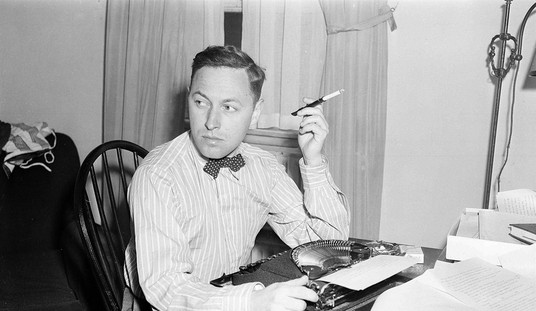Yes, I’m serious. Buddhists have no souls. Or permanent ones at least. That’s really what Buddha taught.
Okay, end of column.
Well, no.
Let’s talk about souls first. What is this “soul” thing we’re talking about? The ever-convenient Mac built-in dictionary says the soul is “the spiritual or immaterial part of a human being or animal, regarded as immortal.”
The common conception of the soul in the West is the immortal part of us, the thing that goes to Heaven — or doesn’t — when we die. There’s a whole lot of Western Christian philosophy about the soul that I’m not going to try to go into in depth, but certainly that’s the basic idea: an eternal, undying part that just “wears” the body, like clothes that it takes off and leaves behind. There’s a living, breathing entity there that’s “alive,” and then the breath stops and something is gone.
In fact, the Latin, Greek, Sanskrit, and Chinese words that correspond to “soul” all have roots in “breath.” (I just looked up the etymology of “soul,” which is of Germanic origin, and it turns out to be pretty much perfectly obscure; it appears that early missionaries into Northern Europe picked it up to translate the Greek word psyche.)
In any case, the Sanskrit word is atman, and one of the Buddha’s basic teachings was the doctrine of an-atman (an- being a negative), or in other words, the doctrine of the non-existence of a permanent soul.
This was a radical revision of the Hindu idea that appears in, for example, the Bhagavad-Gita, where Krishna tells Arjuna, “Never was there a time when I did not exist, nor you, nor all these kings; nor in the future shall any of us cease to be.” (That’s from Prabhupada’s translation, the one the Hare Krishnas used to sell in airports. Another thing we lost after 9/11.)
Basically, what Buddha was pointing out was that anything that was “us,” was our “identity”, was inherently changing from day to day, instant to instant, and so necessarily couldn’t be “eternal.” So there is no permanent Self, no soul, no spirit that exists forever.
This is probably the thing that is least understood in Buddhism, and this time I don’t mean in the West; I mean everyone. That illusion of Self is persistent and very very stubborn, because it’s a necessary illusion in day-to-day life — if there’s no Self and no others, then who’s going to write the columns? Who’s going to cash the checks?
Hipster Buddhism in particular is prone to this — I think a lot of hipster Buddhists basically transfer what they learned in Sunday school to a different name because being a Buddhist is cooler than being a Methodist. What got me thinking about the doctrine of anatman, in fact, was a Facebook posting from Shambhala Books reporting that the Ven. Tharchin Rinpoche had died. Or, as they put is, “passed into parinirvana.”
This immediately struck me, because, well, basically it was wrong.
“Parinirvana” means “final cessation.” It’s what happens to a Buddha when his physical body dies: being Liberated, he just disappears, no longer subject to reincarnation. Saying that Tharchin had “passed into parinirvana” is wrong for several reasons, the biggest one being that Tharchin was (is?) a tulku, someone who reincarnates over and over again to teach. The most famous tulku in the West is the Dalai Lama; the current Dalai Lama, a guy named Tenzin Gyatso, is considered to be the 14th reincarnation in his line. Technically, our friend Tenzin is considered a bodhisattva, not a Buddha.
You remember the old Bill Cosby routine about when he had his tonsils out? He yells to an orderly, “Hey! You! Almost-a-doctor!” A bodhisattva is almost-a-Buddha. A bodhisattva is a being who has released all attachments except the attachment to seeing all sentient beings liberated. The explanation is that this one attachment is sufficient to keep someone on the cycle of reincarnation; the bodhisattva keeps coming back until all the rest of us catch up.
The thing about Tharchin passing into parinirvana, then, is either asserting that Tharchin isn’t coming back, because after the final cessation there’s nothing to come back, or is just a confused bit of hipster Buddhism looking for a nice Buddhist way of saying “he died.”
I’m betting on the hipster explanation, actually; the actual announcement on the Shambhala website now says just “passed away,” which is really much more Buddhist anyway.
The comments on the Facebook post were full of people saying things like “he’s gone to a better place,” or “we’ll be together again someday.” And okay, you could make a case for the “together again” one, but the “better place” one is pure hipster Buddhism, turning Nirvana into Heaven.
This reincarnation thing, though, is a place where a whole lot of people get confused. God knows Buddha wasn’t very clear about it himself; remember from last week that where you go when you die is one of the unanswerable questions.
One way Buddha tried to explain it was with a story called the parable of the candle. Asked about reincarnation, Buddha looked at a burning candle and asked if you snuff the candle, then light it again, is that the same flame, or a different flame? If you light another candle from that one, are those two different flames?
Still, Buddha told lots of teaching stories — called jataka — about remembering his previous incarnations. So there must be reincarnation, right? I mean, Buddha wouldn’t lie to us.
Would he?












Join the conversation as a VIP Member